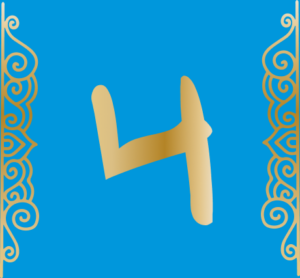




The number “four” functions in world culture as a symbol of stability and permanence of the universe, which is expressed in the following definitions: the four sides of the world, the four seasons, the four-part structure of the day, the circle of life, etc. So, four is the image of harmony, symmetry and order, as well as the horizontal model of the universe, which can be graphically expressed by the cross (Tengrian cross-swastika, cross of Christian denominations, etc.). In Kazakh culture, this number represents permanent integrity, which is expressed in the term “tört tülik mal”. This expression denotes the unity of the four types of livestock: camel, horse, cow and sheep-goat, which form the structure of the sacred quadriga of domestic animals – the livelihood of the Kazakh nomads.
There was also the idea of spirit patrons of four types of cattle: Kambar Ata – patron of horses, Zengi Baba – patron of cows, Oisyl Qara – patron of camels, Shopan Ata – patron of sheep and Seksek Ata – patron of goats. In applied arts the square as a symbol of the earth is found in the ornaments of pile carpets, tekemets and syrmaks. The authentic name of Kazakh ornamental pattern “sharshy” is composed of Persian “chahar” (four) and “su” (side, part).
The four are numerical projections of the horizontal world model, where the binary oppositions are forward (east) – backward (west) and right (south) – left (north).


